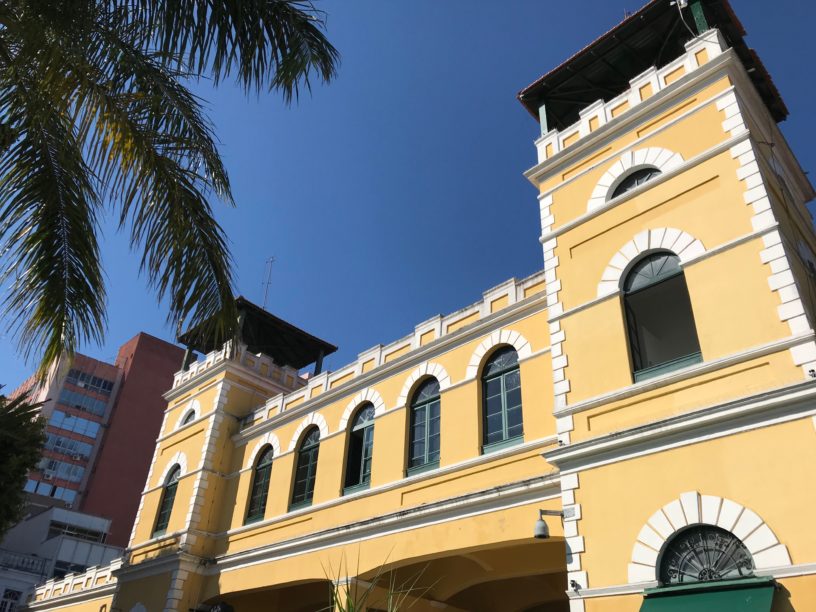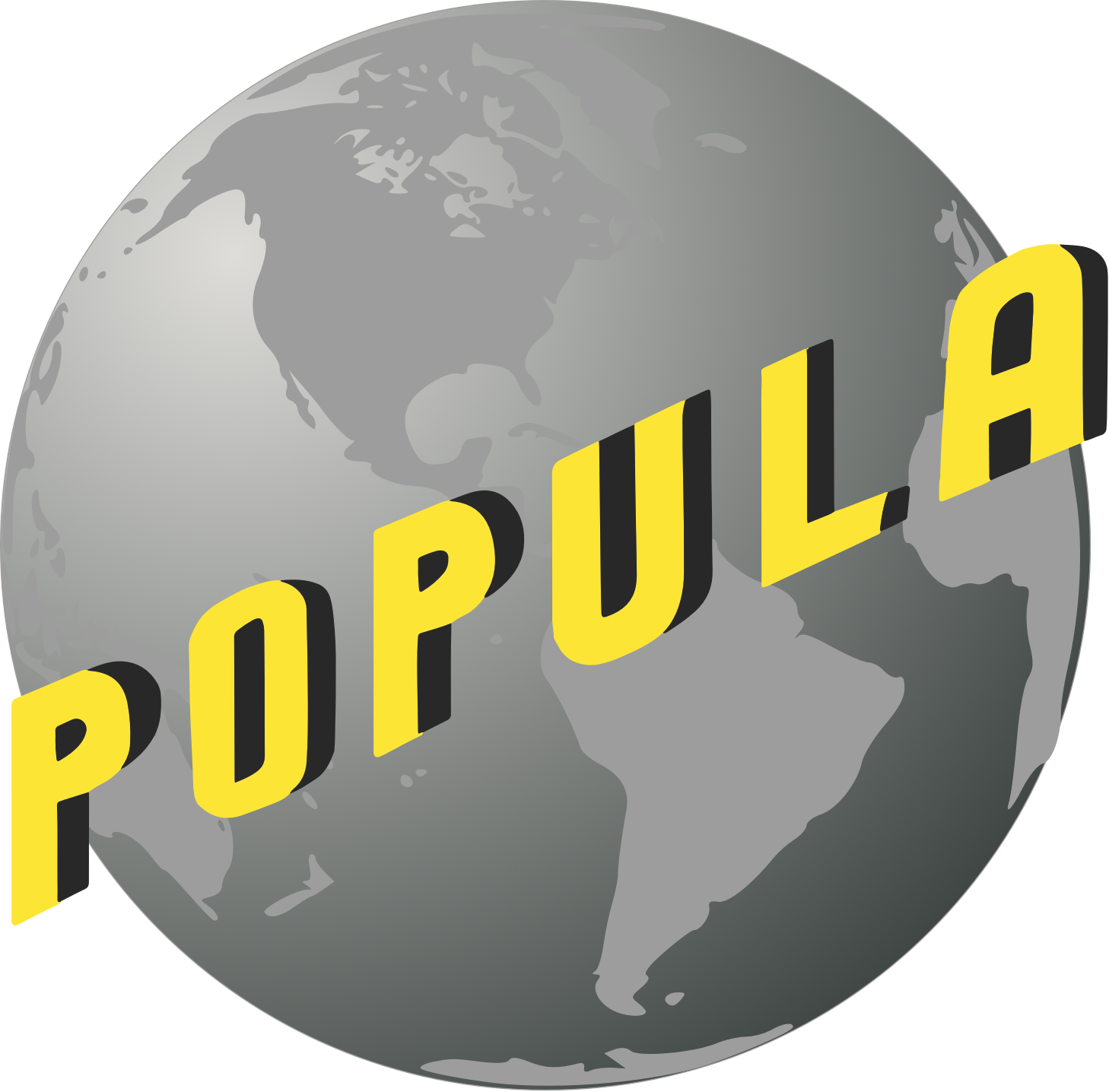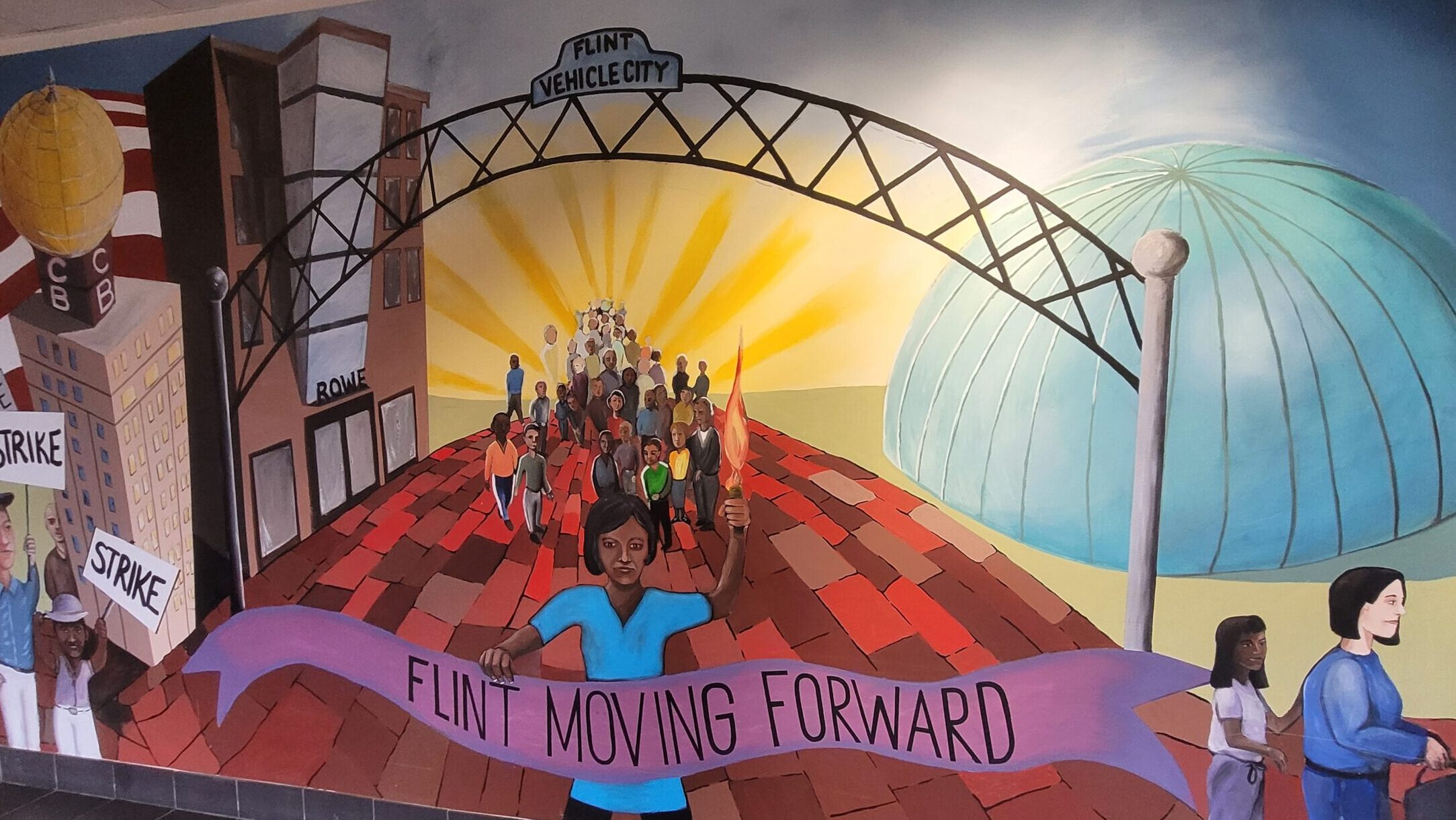“It’s an island,” I answer when asked where I am from. “Florianópolis? Is that in Greece?” While its name has a Greek derivation, my hometown is the state capital of Santa Catarina, a coastal state in southern Brazil.
Since colonial times, the city has been a laboratory for new ways to create order and control in a piece of land surrounded by the sea. Florianópolis—or Floripa, as we lovingly call it—was named after an army Marshal called Floriano Peixoto, who as the second president of Brazil (1891-1894) consolidated the Republic by crushing an uprising by seditious naval officers. Before Floriano, the city was named Desterro (“exile” or “banishment”) after the three huge fortresses that served to stymie a potential Spanish invasion.
By the late 20th century, however, the militarized island had slowly transformed into a well-tamed middle-class tourist paradise. The forts’ strategic locations became historic sites with gorgeous views of the sea; trails were carved into the surrounding mountains and hills; and fancy hotels with their own lagoons emerged in the midst of dense forests. Suburban neighborhoods imitating the urban sprawl of the United States sprang up, filling their gated communities with wealthy soccer players and artists.
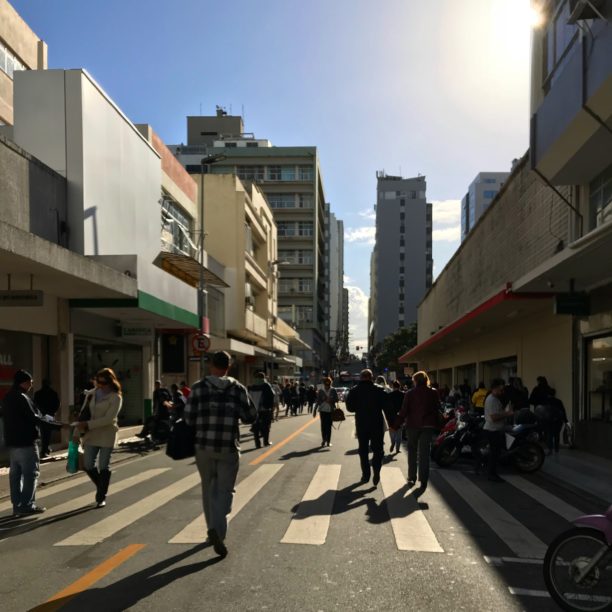
By the 2000s, Floripa, the city of 100 beaches, was known as one of the best places in the world for parties, the safest state capital in Brazil after São Paulo, and for having the country’s third-highest Human Development Index score. In other words, a paradise on Earth.
The truth is more complicated. Traffic can be nightmarish. In January, a hot, dense wind blows through the six bus terminals, masses of domestic and service workers, IT specialists, public servants, and students wait for their turn to hop on a bus and be swallowed by the traffic heading in every direction. In the summer the streets flood; in the winter the southern wind rips at your bones.
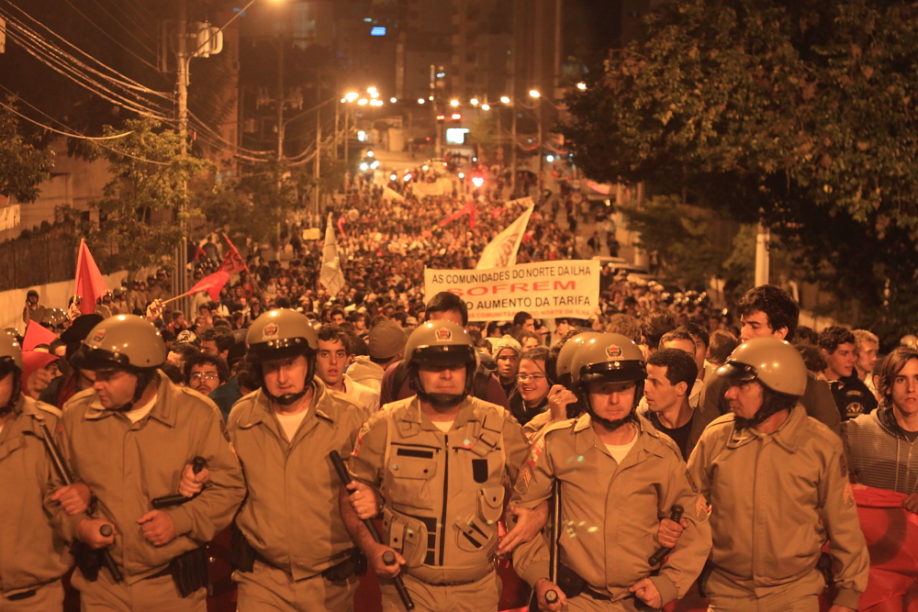
The traffic is not an idle concern for residents. Between the end of 1999 and June 2011, Florianópolis was the stage for endless demonstrations organized by the local youth who demanded improvements in the city’s transportation network, much of which had been privatized and was subject to huge fare-hikes with little public input. The city’s decision to increase fares by over 15 percent in 2003 eventually led to city-wide riots in 2004 and 2005, known sympathetically as Revoltas das Catracas or Guerras das Tarifas (“The Turnstile Riots” or the “Fare Wars”). The youth-led and organized movement spread throughout Brazil, culminating in the foundation of the Movimento Passe Livre (Free Fare Movement) at the 2005 World Social Forum in Porto Alegre. (The MPL eventually became the driving force behind the massive protests that swept across the country in 2013.)
I was finishing high school and beginning college during the Revoltas das Catracas, and I remember being overwhelmed by the speed with which this popular movement was able to take over the city, transforming it in the public’s imagination from paradise to people’s republic.
By the 10th day of protests, I remember noting that even the mainstream media—notoriously conservative in Brazil—was favoring the protesters’ demands, which had been met with a harsh response by police. Still, nobody—myself included—really understood how it had all gone down. What city was this? Was this the real Florianópolis?
I spent a long time chewing over that question, but these days I think that the real city is the one that acknowledges both the imaginary and the concrete, the one that that emphasizes its beautiful beaches, forests, and the sea, while fighting hard to guarantee access to these public resources.
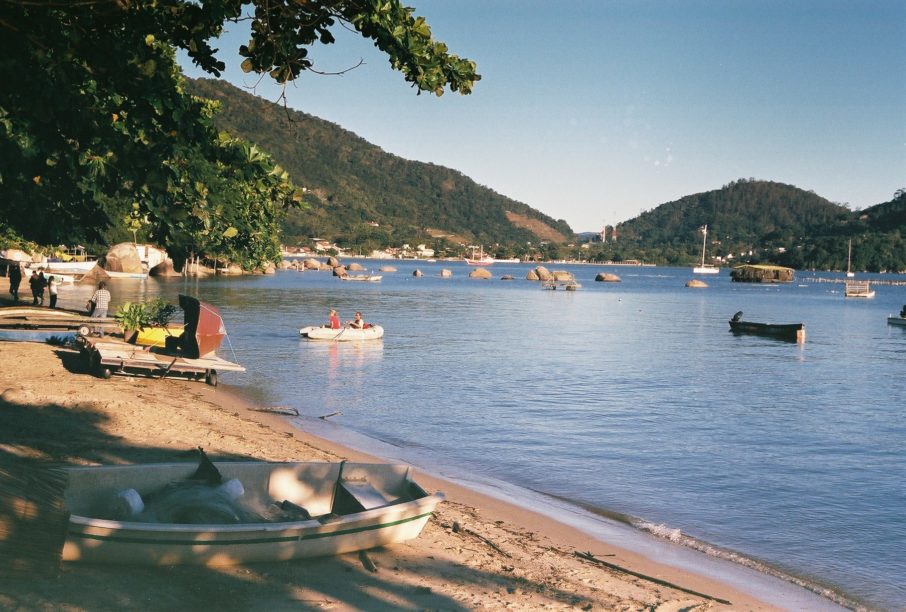
I was born in Rio de Janeiro, but my family moved to Floripa when I was eight. Two significant events took place that year: the city built its first shopping, and the island’s Avaí Futebol Clube had finally moved from up from the second division to the main division of the state league. As my family settled in, I quickly came to appreciate how unusual this kind of action was: Floripa is a city that generally moves slowly. Delimited by a bumpy topography and the hard outer limit imposed by the sea, new constructions on shore seemed to culminate in large avenues that shunted all traffic onto two bridges that connect the island to the continent.
Considering the landscape, oftentimes when you ask a manezinho—as Floripa residents are known—for directions they will end their explanation by saying “e então segue toda vida reto.” (“Then go straight for the rest of your life.”) Sometimes that means that you’ll be on your own to figure out the rest of the path, but often it simply means just that: keep going until you hit the water, or the forest. Manezinhos reinforce these directions with another favorite dictum: “se queres, queres; se não queres, diz!” (“If you want it, you want it; if you don’t, say so!”)
In Floripa, punk rock shows are held in seafood restaurants with beachside views, night clubs open at midnight and going to “the city” means going downtown. Locals address each other as “o nativo,” and the chestnut-bellied seed finch (O Curió) is so beloved that the city has an entire hangar called “Curiódromo” dedicated to all finch-related activities. Some of our local love stories involve nativos exchanging cars and houses for a prize-winning Curió. Many nativos take their birds for walks around the neighborhood, proudly bearing their cages as though they were walking a dog on a leash.
I quickly came to understand why so many people called this laid-back place the Island of Magic. Before learning anything about the city’s history, manezinhos first learn about Florianópolis’ myths and legends. Floripa survives in the mists of the legends of imaginary beings: boitatás (huge, fire-covered snakes), werewolves, ghosts, witches and wizards—a panoply of beings who sound bells in the dead hours of the night, from the woods and the immensity of the sea. There are countless stories about powerful witches who toy with fishermen’s lives, not to mention the ethereal chupa–cabras who leave cattle desiccated on the southern tip of the island. Alongside the slow-moving concrete reality of Floripa lies the immeasurable, the unknown, and the mysterious, which rages against coastal outcroppings and transports witches in their nocturnal trips across the sea.
Many of these stories were passed on by Franklin Joaquim Cascaes, a polymath writer, artist, and folklorist who died in 1983. As a child, I was also introduced to the work of João da Cruz e Sousa (1861-1898). Known as the Black Swan, Cruz e Sousa was born to enslaved parents. As a symbolist, he juxtaposed pessimism, death, and metaphysics; as an abolitionist, he owned a newspaper called Tribuna Popular that denounced racism and social inequality in Santa Catarina.
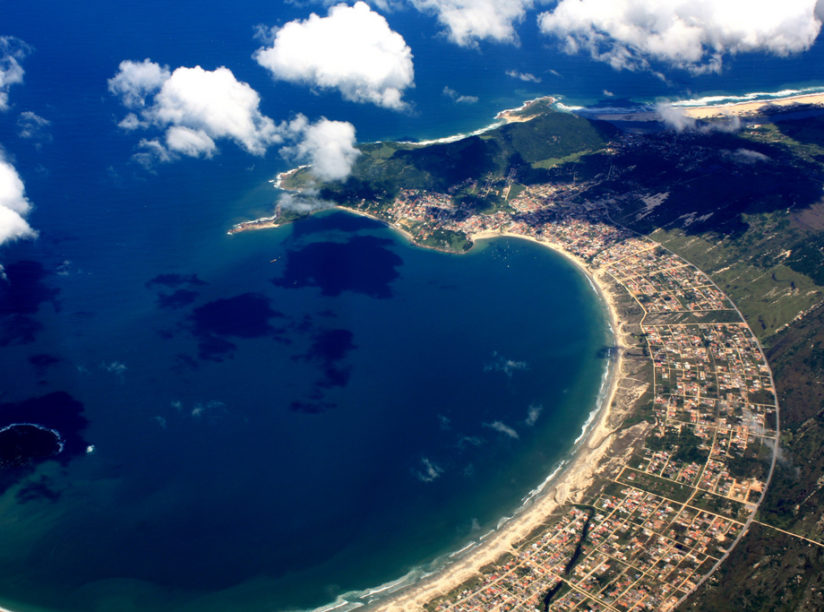
As I grew older and heard more of these stories, I felt my mental map of the city growing alongside new experiences. One day, as I began to explore downtown Floripa, I realized that the Cruz e Sousa Palace—a beautiful pink building which combines aspects of neoclassical and baroque architecture—housed the Historic Museum of the State of Santa Catarina. For years I had taken the Palace for granted. It was just landscape, a natural image that was always there since the beginning of times, a pink wall without life, history or meaning. The turning point came when one day I decided to push open the entrance door. From that day forward, my relationship with the city changed, and I started to try every building’s door. Who, I found myself asking, did these buildings serve? What was their purpose? Who built them?
For years I felt my life in Florianópolis was boring. These days, I live in Massachusetts, whose silent frozen lakes and mountains of snow both terrify me and make me think back on all the hours I spent complaining about endless traffic jams and expensive bus fares. All this makes me want to send Floripa a postcard sometimes, one with a photo of a snowstorm on the front. On the back, I’d tell the city that I remember all of it: the riots and the beaches and the ghosts, too.
